Belonging in the genus of Carduus
this includes Musk Thistle (Carduus nutans),
Italian Thistle (Carduus pycnocephalus),
and Plumeless Thistle (Carduus acanthoides)
Description: Carduus Genus Thistle is an herbaceous biennial plant that grows to 6 feet tall. It has become a serious invader open lands throughout the continental United States. It can be recognized by its showy red-purple flowers and very spiny leaves and stem. The large disk-shaped terminal flower heads droop when mature giving this plant its other common name, Nodding Thistle. Carduus Genus Thistle invades a variety of disturbed areas and pastures are particularly at risk due to it being unpalatable to livestock. Once established it can spread rapidly due to high seed production (as much as 120,000 seed per plant). The seed is wind blown and readily moves great distances. Carduus Genus Thistle is native to Western Europe and was accidentally introduced into the United States in the early 1900s. Carduus Genus Thistle is found throughout the U.S. and is now a major problem species in Johnson County.
What’s the problem? Carduus Genus Thistle infestations are economically important in agricultural systems because they compete with crops for space, light, nutrients, and water and because their spiny habit renders them unusable for livestock. Because Carduus Genus Thistle is unpalatable to wildlife and livestock, selective grazing leads to severe degradation of native prairies and grasslands as wildlife focus their foraging on native plants, giving Musk Thistle a competitive advantage. Although Carduus Genus Thistle is infrequently found in dense forests, it can colonize areas subjected to natural disturbances such as roadsides, abandoned farms, over grazed pastures, etc.
Management methods: Mechanical (hand-pulling, digging, etc.) can be effective on small populations. Plants are removed more easily when in the rosette stage in the spring or in damp soil conditions. Mowing will help destroy the plant, but timing is important. If the plants are mowed too early in the spring, they will still send up a seed head and produce viable seed. Biological control research has shown some promise but still needs additional research. Two weevils have been introduced from Europe and released in the United States as a biological control for Carduus Genus Thistle, the Thistlehead-Feeding Weevil (Rhinocyllus conicus) and the Rosette Weevil (Trichosirocalus horridus). These Weevils have been released in a number of western states with some notable successes achieved. However, recent observations of unintentional and unanticipated impacts of the Thistlehead-Feeding Weevil to native thistles, including some rare species, has raised a red flag about its continued use, at least in the western U.S. Controlled burning is generally not an effective method for control. Herbicides can be a viable management alternative if used properly and cautiously. Be sure to carefully read and follow all instructions on the label or consult a weed management professional before usage if in doubt. Broadleaf Herbicides applied in the rosette or early growth stages can be effective if applied correctly. Once the bright pink seed head starts to turn brown and dry out, the plant will still produce viable seed even if sprayed, so alternate management methods such as mowing would need to be used. The best management strategy for Carduus Genus Thistle, like many noxious and invasive species is to prevent its establishment and to maintain a competitive ground cover, whether the area is a pasture or natural area. Proper fertilization and elimination of disturbances in the ground cover and soil will help reduce germination and invasion from new plants. Management may require several years to reduce or eliminate the weed infestation.
Musk Thistle Photos

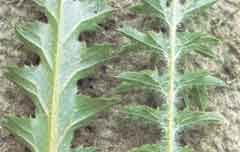
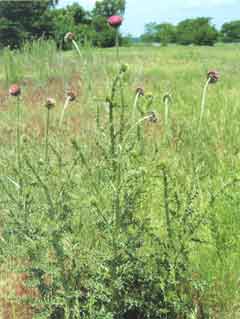

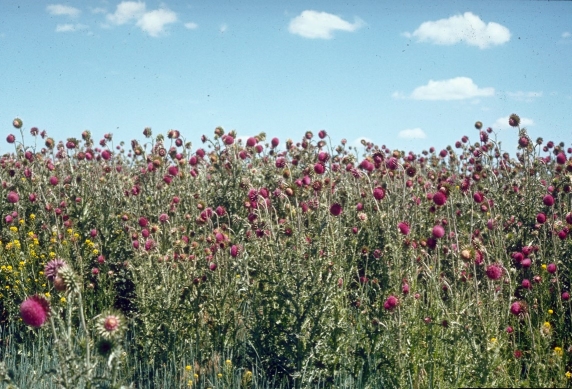
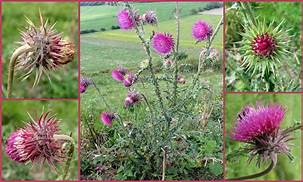
Italian Thistle Photos
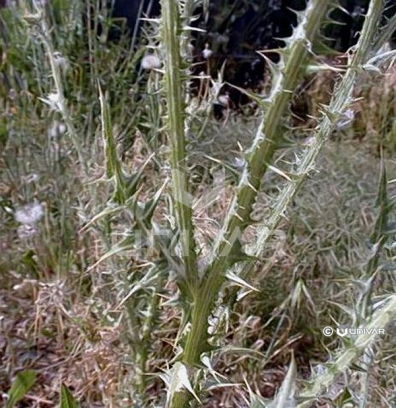
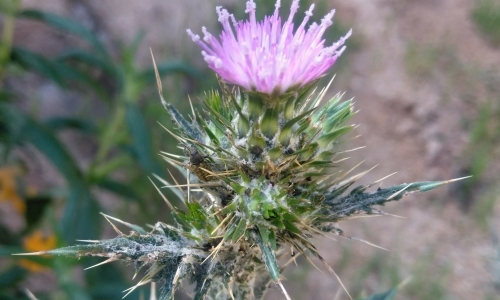
Plumeless Thistle Photos
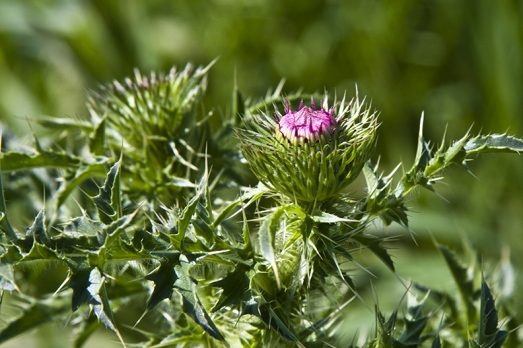
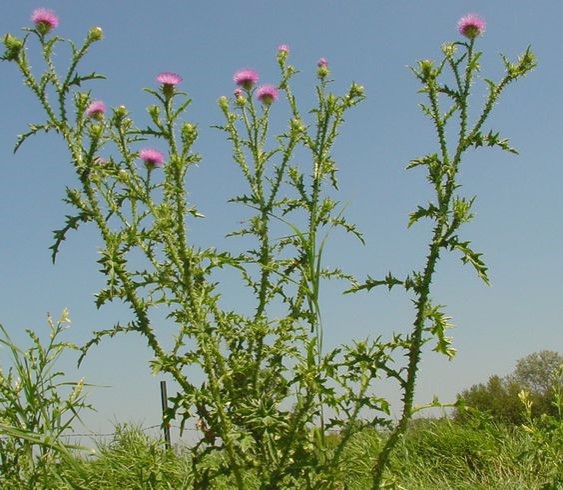
Photos courtesy of Weeds of Nebraska and the Great Plains published by Nebraska Department of Agriculture and DNR
